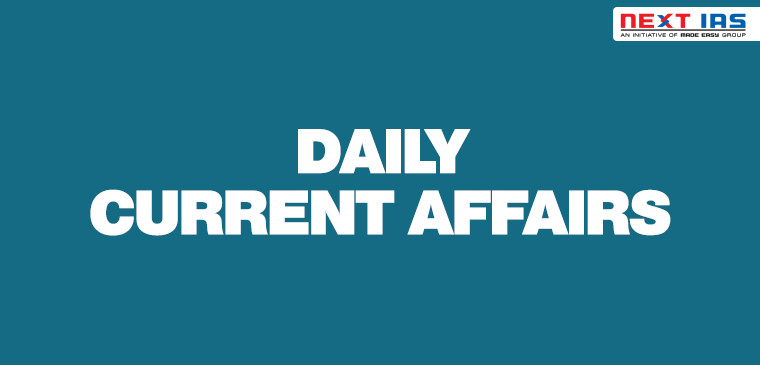
In News
A virtual program organised on the occasion of World Milk Day was chaired by the Union Minister for Fisheries, Animal Husbandry & Dairying.
World Milk Day
- In 2001, World Milk Day was established by the Food and Agriculture Organisation of the United Nations to recognize the importance of milk as a global food, and to celebrate the dairy sector. It is observed every year on June 1st.
- Aim: To appreciate dairy farmers ,the dairy sector, and recognize the importance of milk as a global food. The dairy sector supports the livelihoods of millions of people in India.
- Theme for 2021: It will focus on ‘Sustainability in the dairy sector with messages around the environment, nutrition, and socio-economics’.
- Gopal Ratna Awards: On the occasion, the launch of Gopal Ratna Awards were announced.
- E-Gopala App will be integrated with UMANG platform and users of Umang platform will get access to App.
- e-GOPALA app (Generation of wealth through Productive Livestock) is a comprehensive breed improvement marketplace and information portal for direct use of farmers.
Milk Production in India
- India’s success story in milk production was scripted by Dr Verghese Kurien, known as the “Father of the White Revolution” in India
- India’s milk production is growing by 35.61% during the last six years to 198.4 million tonnes in 2019-20.
- The annual growth rate of milk production was 6.27 percent during 2014-15, thereafter, there was a steady increase.
- In 2019-20, milk production increased by 5.68 per cent as compared to the previous year.
- The rural sector has an estimated share of 57 per cent in the total consumption.
- India continues to be the largest producer of milk in the world.
- Uttar Pradesh, Rajasthan, Madhya Pradesh, Gujarat, Andhra Pradesh and Punjab continued to be the major milk producing states.
Challenges Faced By The Indian Dairy Sector
- Shortage of feed/fodder
- There is an excessive number of unproductive animals which compete with productive dairy animals in the utilisation of available feeds and fodder.
- The grazing area is being reduced markedly every year due to industrial development resulting in shortage of supply of feed and fodder to the total requirement.
- Education and Training
- Lack of vigorous education and training programmes on good dairy practices in India mostly in rural areas.
- Health
- Veterinary health care centres are located in far off places. The ratio between cattle population and veterinary institution is wider, resulting in inadequate health services to animals.
- Hygiene Conditions
- Many cattle owners do not provide proper shelter to their cattles leaving them exposed to extreme climatic conditions which further leads to mastitis conditions.
- High import duty
- The constraints being faced in exports i.e market access issues in China, EU, South Africa and Mexico,high import duty charged by SAARC and neighbouring countries such as Bangladesh (35%) and Pakistan (45%).
Initiatives Related to the Dairy sector
- Several measures have been initiated by the government to increase the productivity of livestock, which has resulted in increasing the milk production significantly.
- Rashtriya Gokul Mission (RGM) :Rashtriya Gokul Mission (RGM) has been launched in December 2014 with an outlay of Rs 2025 crore for development and conservation of indigenous breeds through selective breeding in the breeding tract and genetic upgradation of nondescript bovine population.
- The scheme comprises two components namely National Programme for Bovine Breeding (NPBB) and National Mission on Bovine Productivity (NMBP).
- National Dairy Plan Phase I (NDP I) : It is a Central Sector Scheme of Government of India, launched March 2012.It is a scientifically planned multi-state initiative being implemented by National Dairy Development Board (NDDB) with the network of End Implementing Agencies (EIAs) for the period 2011-12 to 2018-19 with the following objectives:
- Increase productivity of milch animals and thereby increase milk production to meet the rapidly growing demand for milk.
- Provide rural milk producers with greater access to the organized milk processing sector.
- National Animal Disease Control Programme (NADCP) :It is a flagship scheme launched in September, 2019 for control of Foot & Mouth Disease and Brucellosis by vaccinating 100% cattle, buffalo, sheep, goat and pig population for FMD and 100% bovine female calves of 4-8 months of age for brucellosis in five years (2019-20 to 2023-24).
- Animal Husbandry Infrastructure Development (AHIDF): It has been approved for incentivizing investments by individual entrepreneurs, private companies, MSME, Farmers Producers Organizations (FPOs) and Section 8 companies to establish
- The dairy processing and value addition infrastructure.
- Meat processing and value addition infrastructure.
- Animal Feed Plant.
- Dairy Entrepreneurship Development Scheme (DEDS):The department of Animal Husbandry, dairying and fisheries is implementing Dairy Entrepreneurship Development Scheme (DEDS) for generating self-employment opportunities in the dairy sector, covering activities such as enhancement of milk production, procurement, preservation, transportation,processing and marketing of milk by providing back ended capital subsidy for bankable projects. The scheme is being implemented by National Bank for Agriculture and Rural Development (NABARD).
- Pashu-Aadhar: It is a unique ID on a digital platform for traceability for the animals.
|
About Food and Agriculture Organization (FAO)
Operation Flood
|
Previous article
GST Council Meet
Next article
Facts in News